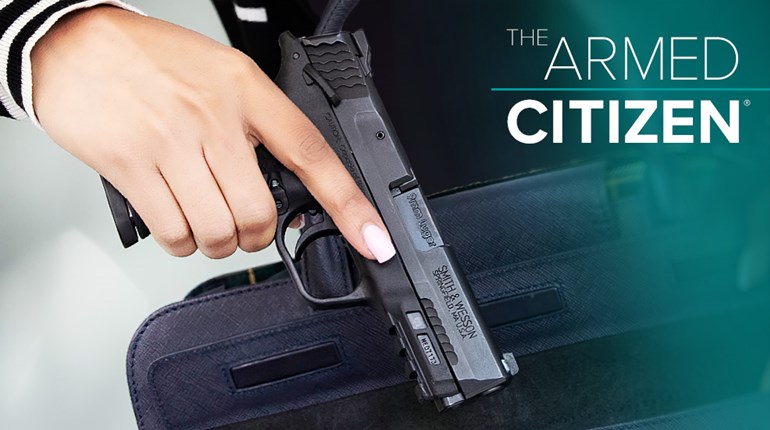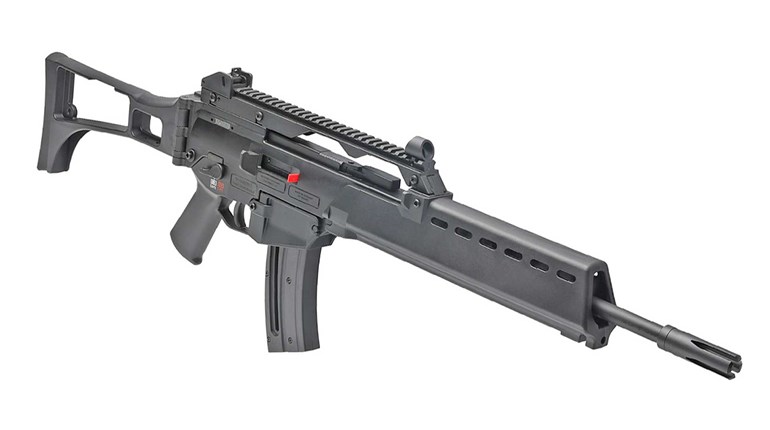
Small, defensive pocket pistols are becoming more and more popular with citizens who need a gun for concealed carry. One of the reasons for this is because American firearm manufacturers are currently building some fine handguns in this category, like the recently introduced Ruger LCP II. Another reason for the popularity of pocket pistols is ammunition companies have also stepped up to the plate by continuing to develop defensive loads that are a vast improvement over what was available in even the recent past. However, it has been said everything is a tradeoff, and this is certainly true with regard to carrying a pocket pistol for personal defense.
To begin with, by its very nature, the best pocket pistol for personal defense is a good deal smaller than the service pistol. This means the various controls on a pocket pistol—the safety, magazine release, etc.—are also smaller. The shooter who does most of his training with the larger service pistol may find he is not nearly as adept or as fast in running the smaller handgun.
A serious defensive shooter will do most of his training with the handgun he carries most of the time. With the pocket pistol, this means practicing your speed loads and tactical loads on a regular basis. Dry-fire practice and defensive presentation should be done from the actual position you carry your pocket pistol. It will immediately become clear that presentation is not anywhere as fast from a pocket holster, waistband, purse or other deep-concealment location. It is also not nearly as quick to load a handgun when you have to dig your extra ammo out of a pocket or other less-accessible location.
While a bit slower, with thought and practice these manipulations can become smoother and quicker, although they will probably never be as fast as the same drill from an exposed hip holster and magazine pouch.
Another consideration regarding the use of pocket pistols is accuracy. While modern handguns of good manufacture generally provide adequate accuracy for defensive purposes, the shorter sight radius of even the best pocket pistols allows a lot of room for operator error. Essentially, the shorter the barrel and the smaller the handgun, the harder it is to make quick, accurate shots. Again, the defensive shooter deals with this problem through practice.
A common drill is making a head shot on your target from the 3-yard line. With a service pistol from an open hip holster, most people can learn to draw and hit in about 1.5 seconds—some do it a good deal faster. However, when drawing from deep concealment starting with hands down at the side, the same accurate hit with the pocket pistol will take about 2.5 seconds, and that's only if the shooter has been practicing with his small handgun.
By the way, starting with your hand on your defensive pistol will cut those times down quite a bit. It's another reason to be alert for danger and prepared to deal with it. Inconspicuously getting your hand on or near your defensive handgun at the first sign of potential trouble is generally not considered brandishing and, in the real world, is an excellent idea.
Another important consideration regarding pocket pistols has to do with ammunition. While this is not a condemnation of ammunition manufacturers, the fact is even the best pocket pistols can be picky about what ammo they like. Failures to feed and, occasionally, to eject can occur even with good quality ammunition. There may be a lot of reasons for this failure, but the fact is it occurs often—and one certainly doesn't want to discover this in the middle of a gunfight.
For this reason, it is important to thoroughly test concealed-carry ammunition in a particular pocket pistol. Testing several brands with different bullet configurations is always a good idea when considering ammunition for any defensive handgun. It is particularly critical when considering the pocket pistol.
While we are on the subject of pocket-pistol ammunition, it is important to consider the subject of recoil and its effect on performance and accuracy. Most shooters consider a 9 mm +P load fired from a 34-ounce service pistol to be quite easy to manage. However, fire that same round from a 17-ounce pocket pistol and it quickly becomes apparent there is a world of difference. Recoil of the smaller handgun smacks the shooting hand with much more authority. The smaller grip of the pocket pistol allows the gun to move around in the shooting hand a good deal more.
In smaller handguns, I find the .40 S&W cartridge to be a real challenge to shoot quickly and accurately because of recoil. The wise shooter is smart to try out several guns, in various chamberings, before settling on the best pocket pistol to be carried. In addition, finding one's own recoil and performance threshold is vital when considering a pocket pistol.
In the movies, we see the bad guy hit with a pistol round and get knocked off of his feet while blood flies everywhere. In the real world, even with large-caliber service pistols, this is generally not the case. Even at close range, a violent criminal may not show any immediate signs of having received a fatal hit.
This is especially true when using a pocket pistol.
One of the reasons for this is because the pocket pistol's short barrel delivers its bullet at a much lower velocity than what is generally printed in ballistic charts. Low velocities may cause even the best defensive bullet fired from the best pocket pistol to fail to properly penetrate and expand. At these marginal velocities, the criminal's type of clothing becomes another important factor. Heavy winter clothing, for instance, may reduce the bullet's penetration and can also cause failure of hollow points to fully expand.
For these reasons, the defensive shooter should practice a technique commonly called the "Failure Drill." If, after two shots to center mass, the violent criminal is still standing and still presenting an immediate threat, a third shot should be quickly delivered to the head in an effort to impact the central nervous system and put him down. While the "Failure Drill" is an important technique to practice with any defensive handgun, it is especially vital with the pocket pistol because of the gun's reduced velocity and increased difficulty in delivering accurate fire.
None of my comments about pocket pistols are meant to suggest they are not important tools for the armed citizen. I've carried one—a small revolver—for more years than I care to think about. What you should realize is the pocket pistol, for various reasons, is not an easy handgun to shoot well. It takes a lot of thought and research to find the best pocket pistol suited to an individual shooter. It takes a good deal of practice, lots of practice, in fact, to learn to shoot it well enough to trust it with your life.
So, what are you complaining about? Spending more time in gun shops and practicing at the range is far from a bad thing.






































